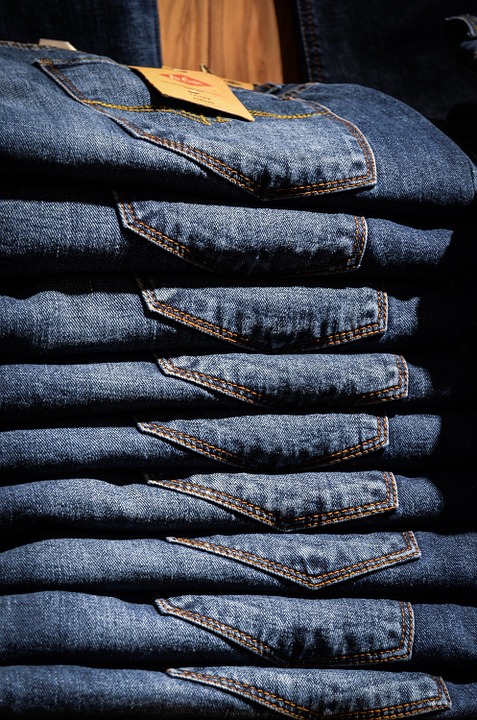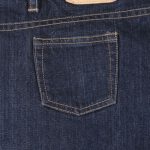Whether you’re a man, woman, young or old, everyone has a favorite pair of jeans. When you’re getting ready and looking for the perfect pair of pants to wear, you probably choose them first. Jeans such as this typically offer the ideal combination of comfort, style, and durability. They are visually appealing, offer a soft and supple texture that’s comfortable to wear, and as they are made of denim you can rest assured knowing they won’t fray or sustain other forms of damage. These are all reasons why you’ve designated those jeans the “perfect pair”. That being said, breaking in jeans usually takes a while, regardless if it’s washed or raw denim.
New jeans often lack the softness of older, more worn-in jeans. The longer you wear a pair of jeans, the softer the denim becomes. This isn’t something that happens overnight. Rather, it takes months — sometimes even longer — to wear in a new pair of jeans. The good news, however, is that there are ways to break in a pair of denim jeans in less time. So if you have a new pair of jeans and aren’t willing to wait that long, keep reading for some helpful tips and tricks on how to break them in.
Choose 100% Denim Jeans
If you want soft, supple jeans that feel like they are broken in, you need to ensure they are made of 100% denim. It’s a common assumption that all the jeans you can get are 100% denim, but this isn’t necessarily true. Traditionally, jeans have been made using nothing more than denim — and many to this day still are.
In recent years, though, there’s been a growing trend towards the use of elastic fabrics and materials in the construction of jeans. Known as “stretch denim”, these jeans contain both traditional denim and an elastic material, such as polyester, giving them greater elasticity. Stretch denim jeans are great if you want a material that’s more flexible, but they aren’t as easy to break in as traditional 100% denim jeans.
According to some reports, jeans made of 100% raw denim will expand roughly 1 to 1.5 inches over a course of three months. This expansion plays a key role in their softness and texture. If they didn’t expand, they would feel stiff and rough, which is the exact opposite of “broken-in”. The bottom line is that you need to choose jeans made of 100% denim if you want to break them in.
Wash Them… But Not Too Often

How often do you normally wash your jeans? Contrary to what some people may believe, jeans shouldn’t be washed after each wear. If you wash your jeans each and every time after wearing them, it will degrade the fabric and shorten their overall lifespan. On the other hand, not washing your jeans frequently enough prevents them from getting broken in. You must find a delicate balance between washing your jeans enough to break them in, yet still not washing them so often that it degrades the fabric.
Line Dry
When possible, line dry your jeans instead of placing them in the clothes dryer. Sure, it’s probably more time-consuming (and more work), but taking those few extra steps will help break in your jeans. Clothes dryers are pretty rough on jeans, knocking them around in a cylinder-shaped basket until the water is knocked off. Although effective at drying, clothes dryers are pretty harsh on the fabric itself.
So, if you want to break in your jeans, it’s best to stick with line drying them. After they have finished washing, remove them from the washing machine and place them on a line to dry. If you don’t have access to a traditional drying line, simply use the shower rod in your bathroom, just remember to take them down before you shower next.
Wash with Vinegar
No, that’s not a typo. You can wash your jeans with vinegar to help break them in. Vinegar has unique properties, making it effective for this purpose. The next time you wash your jeans, try adding 1/4 cup of white vinegar. The vinegar acts as a deodorizer and fabric softener, enhancing the quality of your jeans. This alone isn’t going to magically break in a new pair of jeans, but when used in conjunction with the other tips listed here, it will certainly help.
Wash with Other Clothes
Rather than washing your jeans by themselves, try to wash them with clothes of similar color. How does that help to break them in? Well, washing your jeans by themselves — in a separate load — allows them to knock around in the washing machine without any other garments. If there are other garments in the washing machine, however, those garments will knock against denim, just enough to make them slightly softer and fit a bit better.
Clean Stains by Spot Treating
It’s bound to happen sooner or later: you accidentally spill a little soda, coffee, or some other stain-causing liquid on your favorite pair of jeans. When the jeans are made of blue denim, minor stains are typically concealed. However, this doesn’t necessarily mean they are completely hidden.
Even minor stains typically remain visible, in which case it is best to spot-treat them promptly. Take a damp washcloth and blot the affected area until the stain is removed. For deeper, set-in stains, try vinegar instead. Not only is it great for softening fabric, but it’s also great for removing stains.
Wear Them
Of course, conventional wisdom should lead you to believe that the best way to break in a new pair of jeans is to wear them. You can’t expect your jeans to feel broken in if you’ve only worn them once or twice. Opting for high-quality denim will make them feel soft, but ultimately you need to wear them — and wear them frequently.
To recap, there are several ways of breaking in jeans. This includes choosing jeans made of 100% denim, washing them with other clothes, adding vinegar to the washing machine, and wearing them. Following these tips should set you on the right path for broken-in jeans.










